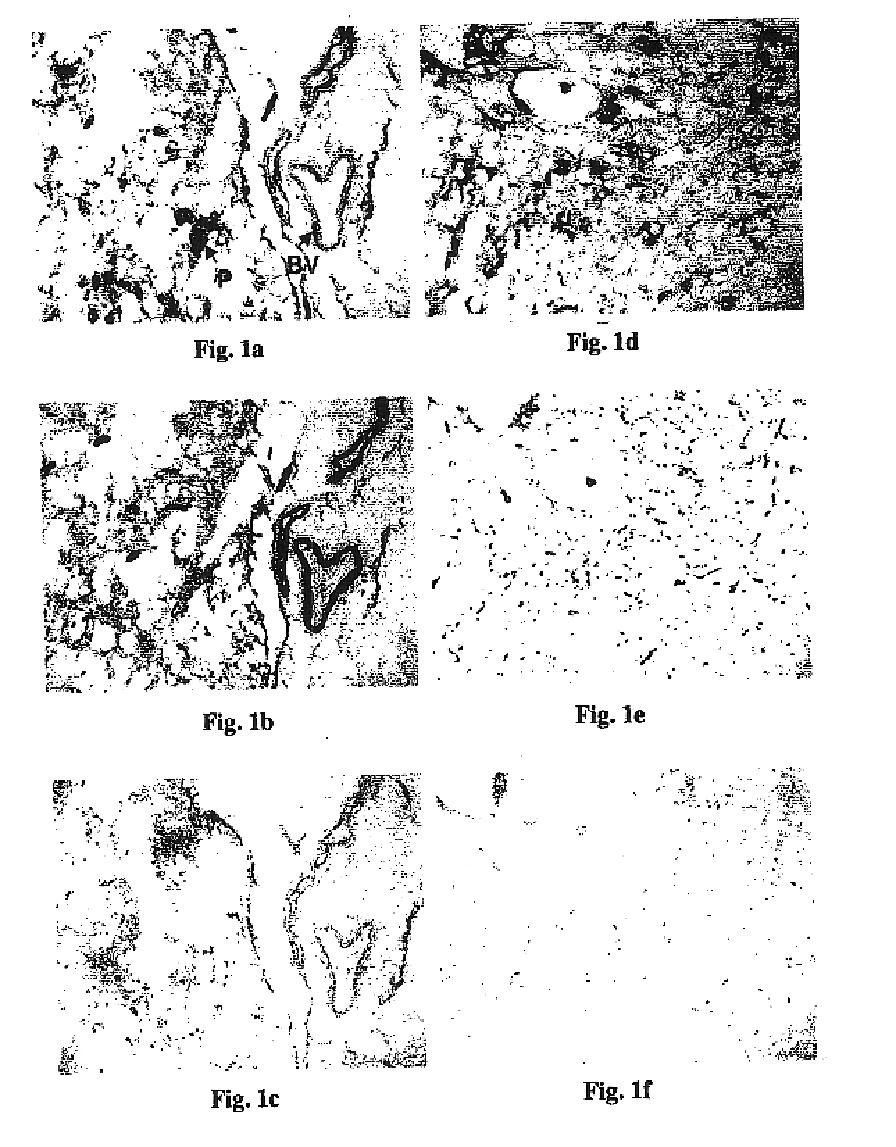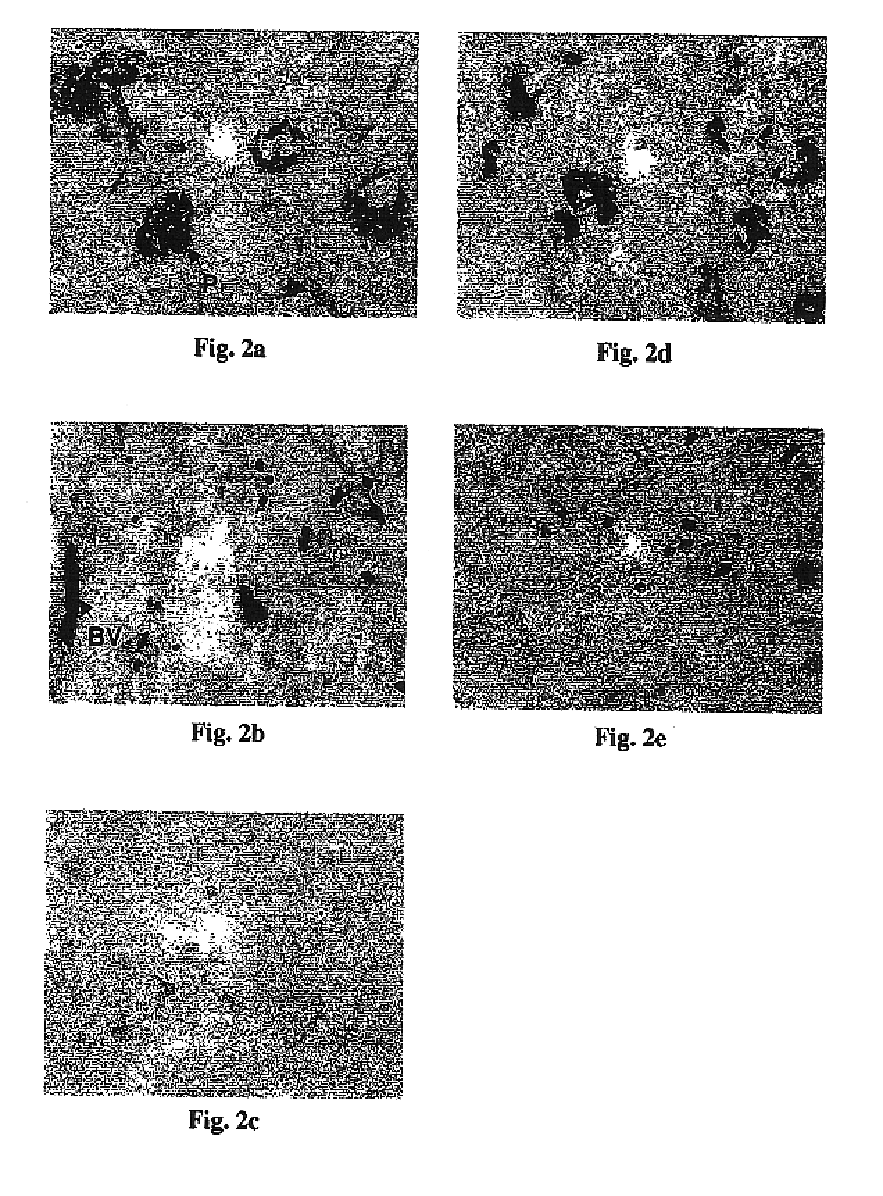Immunogenic peptide composition comprising measles virus Fprotein Thelper cell epitope (MUFThl-16) and N-terminus of β-amyloid peptide
a technology of fprotein and immunogen, which is applied in the field of immunogen composition comprising peptides, can solve the problems of inability to definitively cure or treat this devastating disease in humans, no definitive treatment or cure, and inability to use adjuvants in humans, so as to promote fibril disaggregation, accelerate the clearance of these plaques, and high cross-reactivity
- Summary
- Abstract
- Description
- Claims
- Application Information
AI Technical Summary
Benefits of technology
Problems solved by technology
Method used
Image
Examples
example 1
Typical Methods to Synthesize Aβ Peptide Immunogens of the Present Invention
[0075]Peptide immunogens listed in Table 4 (SEQ ID NOS:701-76) were synthesized individually by the Merrifield solid-phase synthesis technique on Applied Biosystems automated peptide synthesizers (Models 430, 431 and 433A) using Fmoc chemistry. Preparation of peptide immunogens comprising a combinatorial library Th, i.e., idealized artificial Th site such as MvF derived Th1-8 (SEQ ID NOs:38-40), can be accomplished by providing a mixture of the desired amino acids for chemical coupling at a given position as specified in the design. After complete assembly of the desired peptide, the resin was treated according to standard procedure using trifluoroacetic acid to cleave the peptide from the resin and deblock the protecting groups on the amino acid side chains. The cleaved, extracted and washed peptides were purified by HPLC and characterized by mass spectrometry and reverse phase HPLC.
example 2
Evaluation of the Immunogenicity of the Aβ Peptide Immunogens of the Present Invention
[0076]Aβ-derived peptide immunogens were evaluated on groups of guinea pigs as specified by the experimental immunization protocol outlined below and by serological assays for determination of immunogenicity.
[0077]Standard Experimental Design:
[0078]Immunogens:[0079](1) individual peptide immunogen; or[0080](2) a mixture of equal molar peptide immunogens as specified in each example.[0081]Dose: 100 μg in 0.5 mL per immunization unless otherwise specified[0082]Route: intramuscular unless otherwise specified[0083]Adjuvants: Complete Freund's Adjuvant (CFA) / Incomplete Adjuvant (IFA); or water in oil emulsions unless otherwise specified. CFA / IFA groups received CFA week 0, IFA in subsequent weeks.[0084]Dose Schedule: 0, 3, and 6 weeks or otherwise specified.[0085]Bleed Schedule: weeks 0, 5, 8 or otherwise specified[0086]Species: Duncan-Hartley guinea pigs or otherwise specified[0087]Assay: Specific ELIS...
example 3
Characterization of the Relative Immunogenicities of Aβ1-42 and its N-Terminal Fragments for Optimization of Design for Site-Directed Aβ Peptide-Based Synthetic Vaccine
[0090]To design a total synthetic vaccine that generates a high level of high affinity antibodies against the Aβ peptides with high cross-reactivity to the soluble Aβ1-42 peptides and the plaques in the brain of AD patients, the relative immunogenicities of Aβ1-42 and its N-terminal fragments were characterized initially. In order to determine the relative immunological properties of the various regions within Aβ1-42 peptide, a mild adjuvant suitable for human use, alum was employed in the first study. The relative immunogenicities of Aβ1-42 peptide and an N-terminal fragment thereof, Aβ1-28 were compared. The immunogenicity evaluation was conducted according to procedures described in Example 2. Unexpectedly, Aβ1-28 was found to be more immunogenic than the Aβ1-42 peptide, indicating that there is immunosuppression w...
PUM
| Property | Measurement | Unit |
|---|---|---|
| weight | aaaaa | aaaaa |
| concentration | aaaaa | aaaaa |
| fibrillar aggregation | aaaaa | aaaaa |
Abstract
Description
Claims
Application Information
 Login to View More
Login to View More - R&D
- Intellectual Property
- Life Sciences
- Materials
- Tech Scout
- Unparalleled Data Quality
- Higher Quality Content
- 60% Fewer Hallucinations
Browse by: Latest US Patents, China's latest patents, Technical Efficacy Thesaurus, Application Domain, Technology Topic, Popular Technical Reports.
© 2025 PatSnap. All rights reserved.Legal|Privacy policy|Modern Slavery Act Transparency Statement|Sitemap|About US| Contact US: help@patsnap.com


